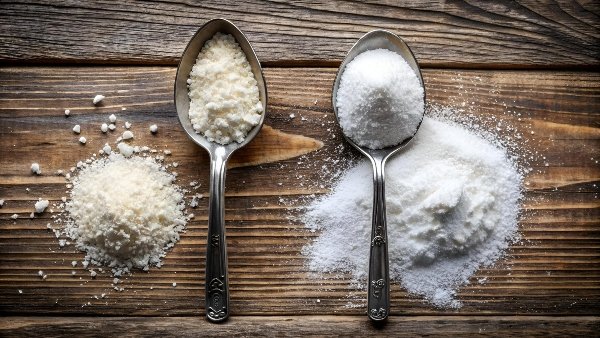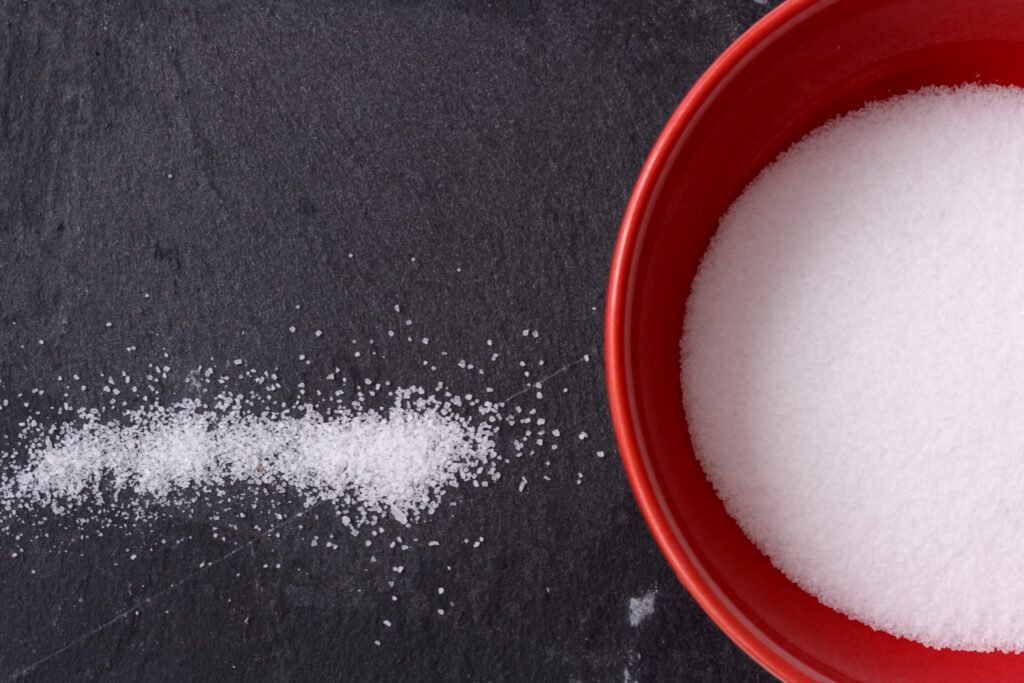Microplastics Found in Indian Salt and Sugar. All salt and sugar samples, both branded and unbranded, were found to contain microplastics. Packaged iodized salt had the highest concentration of microplastics at 89.15 pieces per kg.

In a groundbreaking study, Toxics Link reveals that microplastics are present in all salt and sugar samples tested across India. The study marks the first of its kind in the country, raising serious concerns about the safety of commonly consumed food items.
The study examined ten varieties of salt, including table salt, rock salt, sea salt, and local raw salt, along with five different sugar samples. These were purchased both online and from local markets, covering a range of brands, both packaged and unpackaged. The findings were unsettling: microplastics were found in every sample tested, with the highest concentration observed in iodized salt.
Key Findings of the Toxics Link Study

- Microplastics in Salt: The study found microplastics ranging from 6.71 to 89.15 pieces per kilogram of dry weight in salt samples. These microplastics varied in size from 0.1 mm to 5 mm and were present in forms such as fibers, pellets, films, and fragments.
- Iodised Salt at Risk: Packaged iodised salt samples showed the highest concentration of microplastics, with 89.15 pieces per kg. In contrast, organic rock salt contained the lowest concentration, with just 6.70 pieces per kg.
- Sugar Samples: Among the five sugar samples tested, the microplastic content varied from 11.85 pieces per kg in organic sugar to 68.25 pieces per kg in non-organic sugar. The microplastics found in sugar were mostly in the form of fibers, with some films and pellets.
- Diverse Microplastics: The study identified microplastics of eight different colors, including transparent, white, blue, red, black, violet, green, and yellow, indicating various sources of contamination.
Health Implications and Recommendations
The presence of microplastics in essential food items like salt and sugar raises significant health concerns. Although the long-term effects of consuming microplastics are still being studied, there is growing evidence that they can cause inflammation, disrupt the endocrine system, and may even contribute to chronic diseases.
Toxics Link suggests that consumers consider switching to organic alternatives where possible, as these were found to have lower concentrations of microplastics. The study also calls for stricter regulations and more research into the sources of microplastic contamination in food products.
Microplastics Found in Indian Salt and Sugar
Micro Plastics have been detected in various human body parts. MPs can enter the human body via three primary routes: ingestion; inhalation and direct skin contact. In all living organisms, exposure to MPs can lead to harmful effects, inflammation and increased absorption or movement of these particles. MPs are distributed in
different tissues and organs depending on their sizes.

Expert Opinions
Ravi Agarwal, Director of Toxics Link, commented on the findings, stating, “The study highlights an alarming reality—microplastics have infiltrated our daily diet, with salt and sugar as key carriers. This poses a potential risk to public health, and immediate action is needed to address this issue.”
- “The study highlights an alarming reality—microplastics have infiltrated our daily diet, with salt and sugar as key carriers.”
- “Consumers should consider opting for organic alternatives to minimize microplastic intake.”
Health experts echo the concern, urging consumers to be more mindful of their choices and advocating for greater transparency and accountability from food manufacturers.
About Toxics Link
Toxics Link is an Indian environmental research and advocacy organisation set up in 1996, engaged in disseminating information to help strengthen the campaign against toxics pollution, provide cleaner alternatives, and bring together groups and people affected by this problem.








